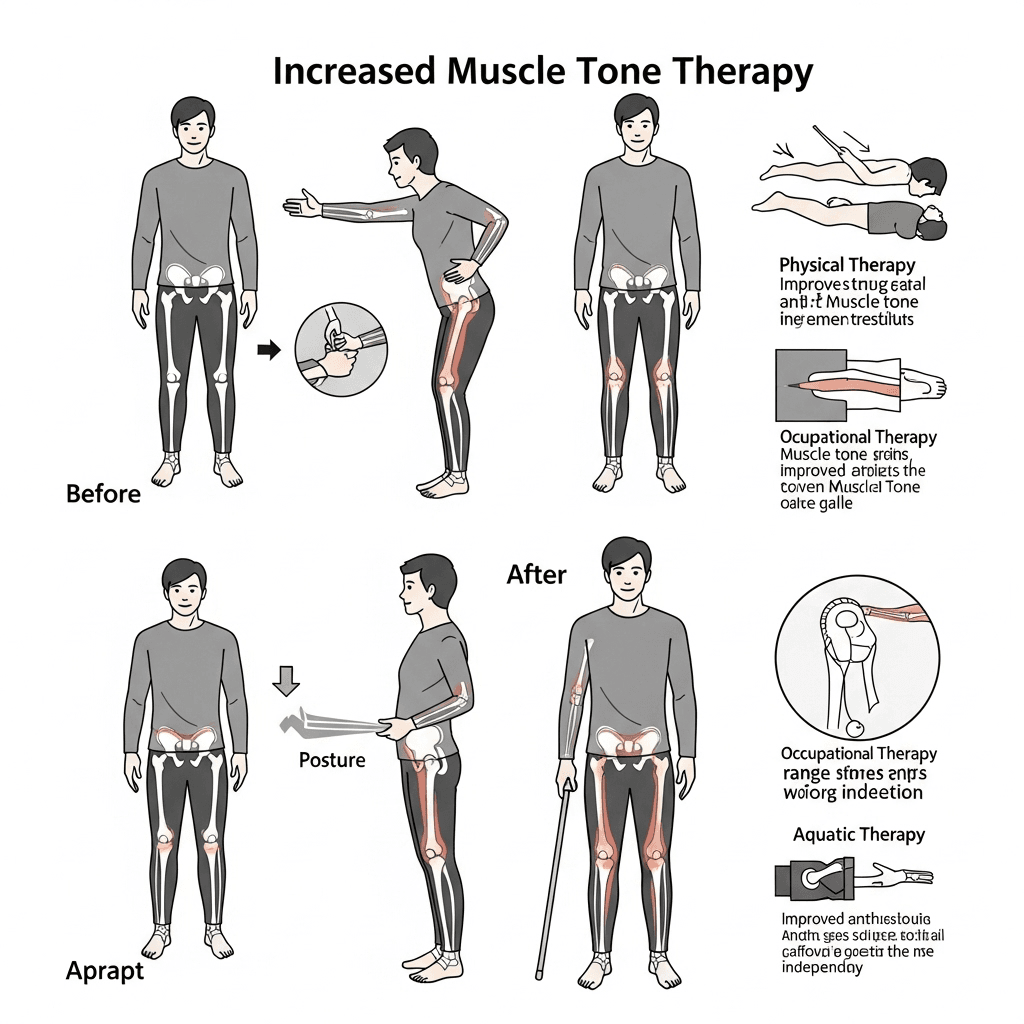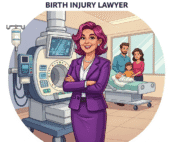Bathing and dressing a child with increased muscle tone (hypertonia or spasticity), common in Cerebral Palsy (CP) and other neurological conditions, can often be challenging for both the child and caregiver. The stiffness and resistance to movement can make these essential daily tasks physically demanding and sometimes uncomfortable. However, by understanding the underlying muscle tone issues and employing practical strategies, these routines can become smoother, more comfortable, and less stressful. This article explores effective techniques and tips for bathing and dressing children with increased muscle tone.
Understanding the Challenges of Increased Muscle Tone in Daily Care
Increased muscle tone can manifest in various ways, making bathing and dressing difficult:
- Stiffness and Resistance: Limbs may be difficult to bend or straighten, making it hard to put on clothes or maneuver during bathing.
- Involuntary Movements and Spasms: Sudden muscle contractions can occur, making it challenging to maintain a stable position or guide limbs.
- Tightness and Contractures: Over time, sustained high tone can lead to muscle shortening (contractures), further restricting movement and making dressing and bathing uncomfortable.
- Sensitivity to Touch: Some children with increased tone may also have heightened sensitivity to touch, making physical manipulation during care routines distressing.
- Difficulty with Transitions: Moving between positions (e.g., lying to sitting, sitting to standing) can trigger increased tone and resistance.
Practical Strategies for Easier Bathing
Creating a calm and supportive environment, along with using specific techniques, can make bath time more manageable:
- Prepare Everything in Advance: Have all necessary items (towels, soap, washcloths, clean clothes) within easy reach to minimize rushed movements.
- Ensure Warm Water and a Comfortable Temperature: Warm water can help relax muscles. Test the water temperature carefully before placing the child in the bath.
- Provide Adequate Support: Use bath seats, supports, or rolled towels to help the child feel secure and maintain a comfortable position. Consider a non-slip mat for safety.
- Move Slowly and Gently: Avoid sudden movements that can trigger increased tone or spasms. Communicate with the child throughout the process.
- Use Gentle, Circular Motions for Washing: This can be less likely to trigger tactile defensiveness than quick, abrupt movements.
- Work with Gravity: Position the child so that gravity assists with movement, such as allowing legs to bend naturally in the water.
- Encourage Active Participation When Possible: If the child has some voluntary movement, encourage them to participate in washing themselves to promote independence.
- Consider Different Bathing Options: Depending on the child’s needs and abilities, options like sponge baths, shower chairs, or using a handheld showerhead might be easier.
- Wrap Snugly After Bathing: A warm, snug towel can provide comfort and a sense of security after the bath.
Practical Strategies for Easier Dressing
Choosing the right clothing and using adaptive techniques can simplify the dressing process:
- Select Loose-Fitting and Comfortable Clothing: Avoid tight or restrictive garments that can exacerbate muscle tone issues.
- Choose Fabrics with Some Stretch: Stretchy materials can be easier to maneuver over stiff limbs.
- Opt for Clothes with Front or Back Openings: These can be easier to put on than over-the-head garments. Consider Velcro closures or snaps instead of buttons or zippers.
- Dress in a Comfortable Position: Find a position where the child feels most relaxed, such as lying down, supported sitting, or propped up.
- Move Limbs Slowly and Gently: Support each limb as you dress it, avoiding forceful pulling or bending.
- Work with the Child’s Movement Patterns: Try to follow the child’s natural range of motion and avoid forcing movements beyond their comfort level.
- Dress the Weaker Side First: For children with hemiplegia, dressing the affected arm or leg first can make the process smoother.
- Use Adaptive Dressing Aids: Tools like dressing sticks, sock aids, or button hooks can help promote independence.
- Break Down the Task into Smaller Steps: Allow the child to participate as much as possible, even if it’s just holding out an arm or leg.
- Consider Seam-Free or Soft-Seamed Clothing: For children with tactile sensitivities, seams can be irritating.
General Tips for Both Bathing and Dressing
- Establish a Consistent Routine: Predictability can help reduce anxiety and resistance.
- Communicate Clearly with the Child: Explain what you are going to do in simple terms.
- Create a Calm and Relaxing Atmosphere: Minimize distractions and try to make the experience positive.
- Allow Plenty of Time: Rushing can increase tension and frustration.
- Seek Input from Therapists: Occupational and physical therapists can provide personalized strategies and recommendations based on the child’s specific needs and muscle tone patterns.
- Encourage Independence: Even small steps towards self-care can boost the child’s confidence and skills.
- Be Patient and Flexible: Some days will be easier than others. Adapt your approach as needed.
For more practical advice and support on daily care for children with Cerebral Palsy, please visit Daily Living on CP Family Hope.
Moving Forward: Promoting Comfort and Independence in Daily Routines
Bathing and dressing a child with increased muscle tone requires patience, understanding, and the implementation of practical strategies. By focusing on gentle movements, proper positioning, adaptive techniques, and creating a supportive environment, caregivers can make these essential routines more comfortable and promote greater independence for their child.
FAQs: Practical Strategies for Bathing and Dressing a Child with Increased Muscle Tone
Why is bathing and dressing so challenging for children with increased muscle tone?
Increased muscle tone causes stiffness, resistance to movement, and sometimes involuntary spasms, making it difficult to position limbs and put on or take off clothing.
Can warm water really help with bathing a child with high tone?
Yes, warm water can have a relaxing effect on muscles, potentially reducing stiffness and making movement easier during bath time.
What types of clothing are generally easier to put on a child with increased muscle tone?
Loose-fitting clothes with stretchy fabrics and front or back openings (using Velcro or snaps) are often easier to manage.
Are there any specific techniques for moving a child’s limbs during dressing to minimize resistance?
Moving slowly and gently, supporting the limb fully, and working with the child’s natural range of motion rather than forcing movements can be helpful.
When should I seek professional advice for bathing and dressing my child with increased muscle tone?
If you are consistently struggling with these tasks, experiencing pain, or if the child is becoming increasingly distressed, consulting with an occupational or physical therapist is recommended. They can provide personalized strategies and adaptive equipment suggestions.
👉 Fill out our FREE Consultation Form today to speak with a legal expert. Your case could make a difference.




